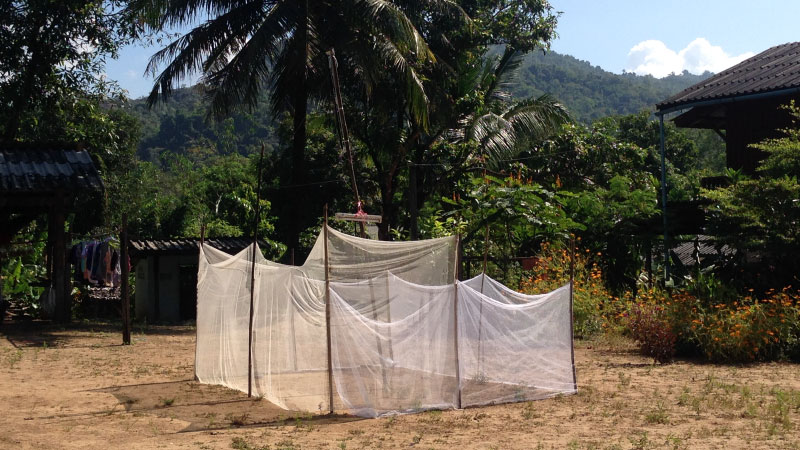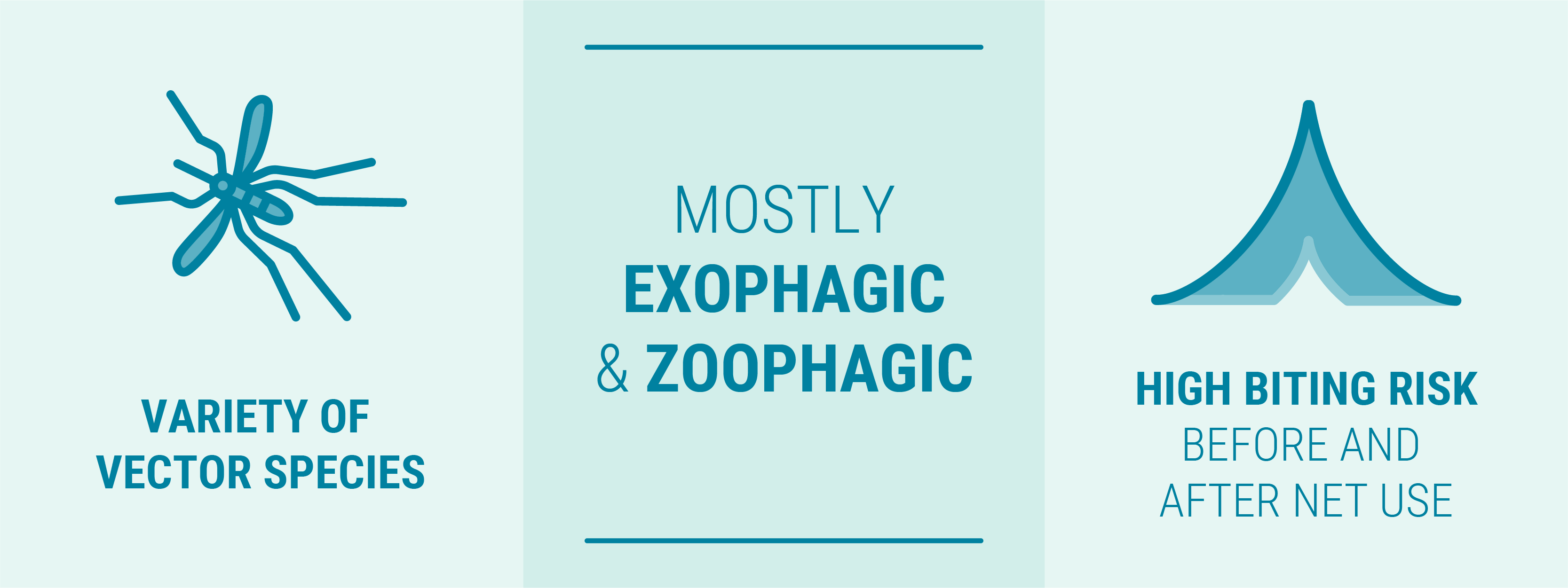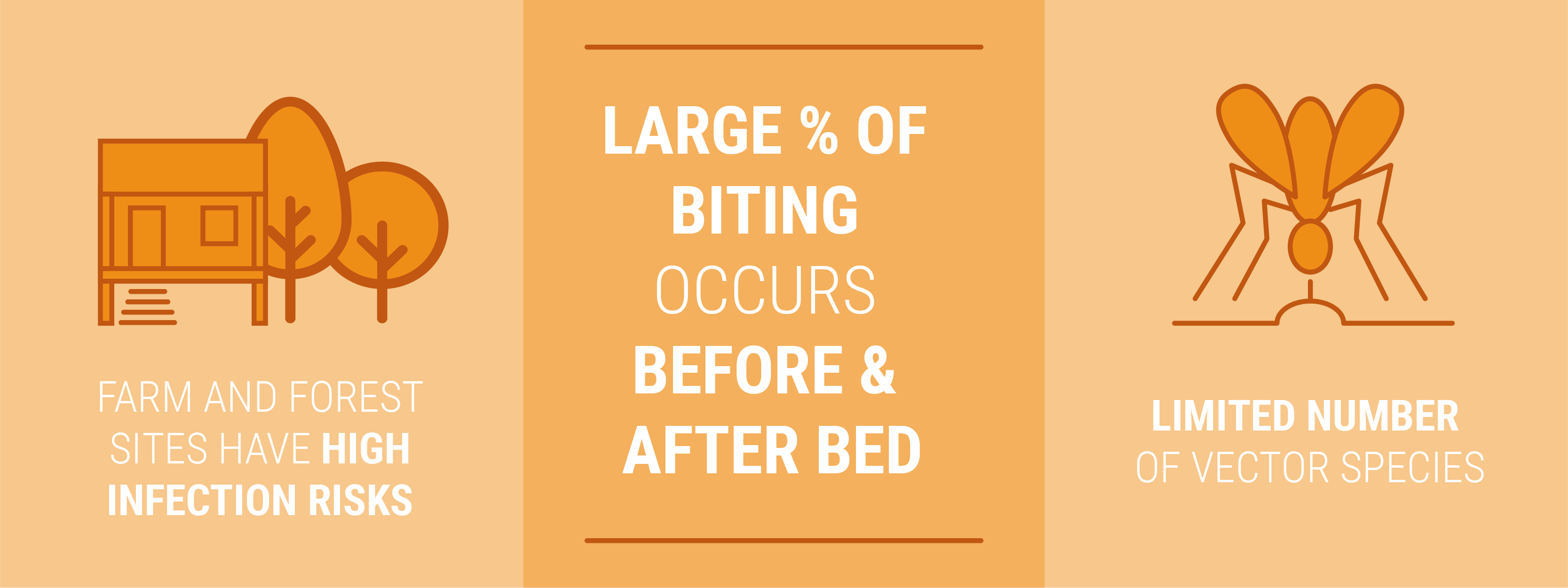Entomological Component

Objective
To determine the infectivity of mosquitoes; the abundance of mosquito species; mosquito feeding times; whether mosquitoes fed on humans or animals; and whether they fed indoors or outdoors, using field and laboratory studies.
Methodology
Mosquitos were caught by human landing catch in the village, farm hut and forest sites. The bait cow catch technique was also used in the villages. In Thailand, collections were conducted in the villages from June to November 2016, and in farm and forest sites from August to November 2016. In Viet Nam, mosquito collections were conducted at three time points in July, October and December.
Vector species identification was based on morphology. In Thailand, Plasmodium infection was determined using ELISA, an enzyme-linked test that detects and measures antibodies in the blood. In Viet Nam, quantitative polymerase chain reaction (qPCR), a laboratory technique, was used to determine Plasmodium infection.
Key findings: Thailand
The abundance and species of Anopheles mosquitoes varied between the villages, farm plots and forest sites.
A variety of primary and secondary vectors were all present in one village and in farm or forest areas.
Only one An. minimus was found malaria positive by ELISA outdoors of a forested hamlet in August during the 05:00-06:00 collection.
Vectors mostly fed outdoors (exophagic) and fed on animals (zoophagic).
Hourly biting profiles showed that a relatively high amount of biting occurred before people went to bed and after they had woken up in the morning.
Net use inside households was high, but much of the indoor biting risk occurred in the early evening before people were under nets.
Collections took place only during the wet season, so researchers were unable to gain a full picture of seasonal trends.

Key findings: Viet Nam
There was minimal evidence of exposure risk in the village.
Farm hut and forest sites where there were large numbers of the primary vector species had a much higher exposure risk.
A variety of primary and secondary vectors were all present from cow-baited collections in one village.
Vector species mostly bit in the evening, including a large percentage before people went to bed.
Low net use existed among people staying in farm huts. Farm huts are open or partially open structures; this meant that outdoor and indoor biting rates were very similar.
An association was found between temperature, relative humidity, and the number of anophelines caught by cow bait. It is likely that rainfall impacted the October collection period; however, rainfall figures were unavailable to allow analysis of whether this influenced the associative findings.
Three An. dirus were found malaria positive by ELISA inside and outside farm huts between 19:00 h and 04:00 h.


